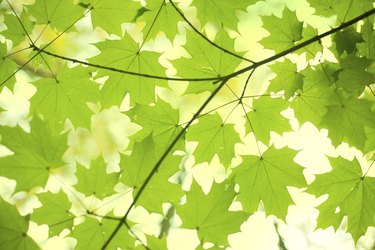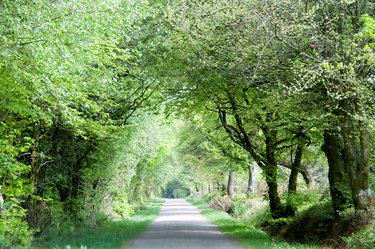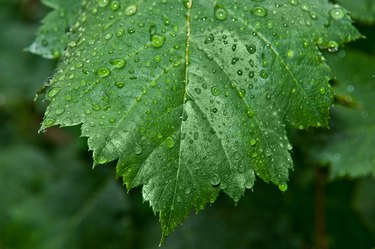Photosynthesis

Photosynthesis is, for lack of a better explanation, how plants and some other organisms "eat." Photosynthesis is the process in green plants by which they create carbohydrates (and the sugar glucose) by absorbing carbon dioxide from the air and water from the soil. The energy source for this process comes from sunlight, which allows the chloraphyll in the plants (what makes them green) to utilize sunlight to fuel photosynthesis. This process can be affected by a lot of different things, but one of the most notable ones is the temperature of the plant's environment.
Temperature
Video of the Day

Generally speaking, photosynthesis of a plant will increase with an increase in temperature. At least, that is, up until 25 degrees Celsius. That temperature is considered the optimum for many plants, and photosynthesis will not increase no matter how the temperature does. The respiration of the plant will increase, though, which means it will need more carbon dioxide and water to maintain itself at higher temperatures, even though it will only be growing at its maximum rate. Additionally, plants are naturally accustomed to periods of cooler temperature during the night, so these should also be simulated in order to achieve maximum photosynthesis.
Video of the Day
Other Factors

There are a number of other factors besides temperature that can affect photosynthesis, though -- such as the amount of carbon dioxide in the air for instance, and what nutrients are in the soil. The amount of water is also important, since too little or too much may kill the plant or stunt photosynthesis. Also, the amount of light that's available is important. Not only the amount though, but also what wavelength of light, as some plants respond better to some wavelengths than others. Generally speaking, each plant will have its own ideal conditions that should be sought out when trying to give it the perfect environment.